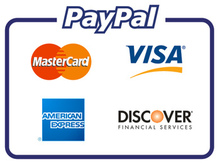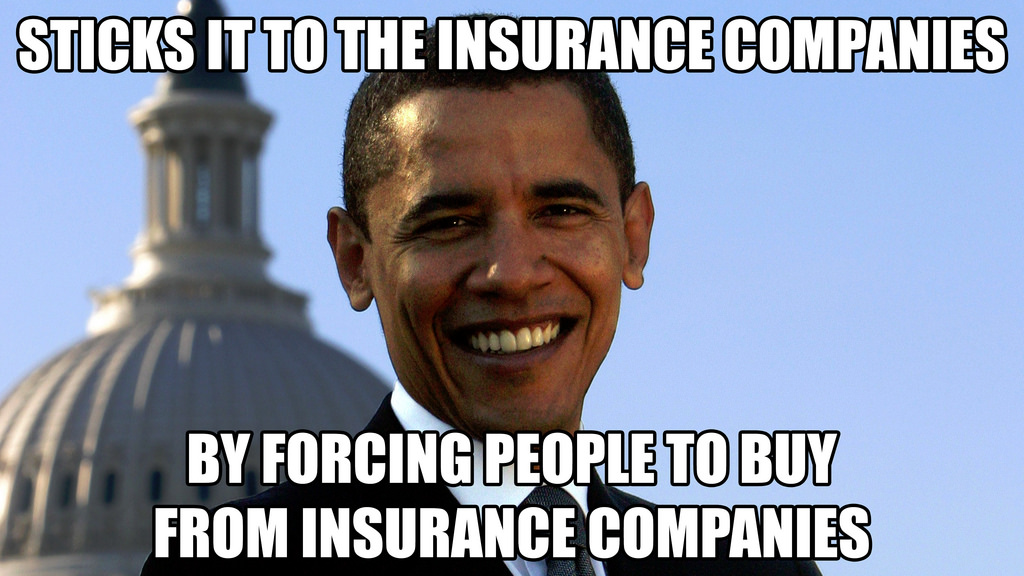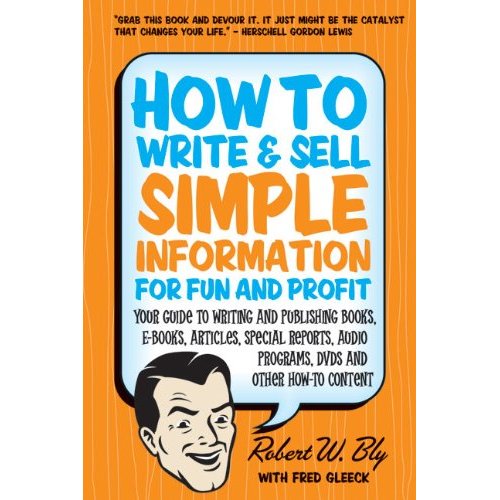Chargebacks: A Business Problem You’d Best Care About

In this article by copywriting great John Forde, you’ll learn ten ways to minimize getting chargebacks from dissatisfied customers.
In early 1974, nobody wanted to use credit cards. And this, my friend, would have been a problem if it had never changed.
Mercifully, however, it did.
Today, we’ve got plastic galore. And lots of other ways to pay that are credit-card adjacent, like Apple Pay, Paypal, and so on.
It sure makes our jobs easier, yes? Anything, after all, that streamlines the sale can’t help but be good for selling.
What you might not know, though, is how you owe a lot of that good fortune – and today, a big problem – to a big change that arrived that very same year.
It’s called the “chargeback.”
This, in case you’re unaware, is the regulatory beast that lets customers contest charges by calling up their credit card company to say “I didn’t buy that.”
This was huge. Suddenly, all or most fear of deceptive merchants, surprise charges, and the rest evaporated… and the use of credit cards skyrocketed into the mainstream.
Here’s the thing…
Decades later, it’s gotten so easy to contest charges, it’s perhaps TOO easy. Even for merchants who try to run an honest business.
And yes, as a copywriter, it’s something you have to care about. Because in ways you’re about to see, you might be part of the problem. But you can also be part of the solution.
See, part of the reason chargebacks are a growing business problem is that they’re now so much easier to initiate.
Customers can go to their credit card website and click a button. It’s a kind of “lazy man’s refund” policy. No customer service to call. No question of when you’ll get charges reversed.
Just instant protection.
On the seller’s side, however, it’s no small thing. It’s not just the sale that gets canceled. There’s the risk of losing money on products you’ve already shipped. There’s also the risk of banking your business on sales you thought were completed.
And then this – you might actually lose your merchant account as punishment from the credit card company if your rate of chargebacks runs too high. And “high” is a pretty low percentage of overall sales, maybe 2% or so of orders.
And it doesn’t stop there.
Processing chargebacks involve fees. They might also involve lost shipping and handling costs. Plus, costs for restocking. On average, US merchants can get hit with about 206 chargebacks per month. And every $100 in chargebacks can eventually cost the merchant $240 total. Of course, it’s not so bad for some but worse for others.
So what’s that got to do with you, if you’re “only the copywriter?” It turns out, plenty. Check out this list below. It includes 10 possible ways to cut down chargebacks. And it could make you a hero with clients. Here we go…
1) MAKE YOURSELF “KNOWN” – According to the folks over at PayPal, one of the biggest reasons customers initiate a chargeback is because they just to recognize your company on the bill. Be very, very clear about who you are when you deliver your products or show up on the bill. Try creating a very descriptive URL that will show up on bills and in your welcome letter.
2) MAKE YOURSELF WELCOME – Speaking of welcome letters, have one. Have a series of them, in an auto-responder “here’s how to get started series. Try having a quick start-up report or CD or DVD or webpage full of welcome videos too. On high ticket items, try sending a snail mail welcome letter too. Plus, a gift that guilts them into sticking around. Or even a promise of a future gift, which they’ll get “when it’s ready.” That way, you also leverage anticipation.
3) FEATURES, NOT JUST BENEFITS – We all know that selling is about putting the benefits out front. But there’s one place you want to emphasize features — that is, what the customer will get, much more — and that’s in the close. Or at least, on the order form. Spell it explicitly, so nobody is confused or feels jilted by what they receive, both of which are also frequently the cause of credit card chargebacks.
4) BE VERY EASY TO REACH – How infuriating is it when you buy something, want to know about something you want to buy, or whatever… and the company you’re trying to reach makes has a “Contact Us” page that’s more impenetrable and unwelcoming than Fort Knox? Yes, exactly. So don’t be that client. And make sure your client isn’t that client either. Be easy to reach for questions, complaints, or comments. Contact forms, phone numbers, or — my favorite — live customer chat.
5) BE QUICK TO RESPOND – Speaking of customer service, there’s a story about how Jeff Bezos tested customer hold times on the phone. In a big meeting, he asked how fast those times were and an exec replied, with no proof, they were less than a minute. So Bezos dialed in to test the claim, using the conference room speakerphone. Four and a half agonizing minutes later, a customer service rep picked up. The exec resigned shortly after. Guess what customers do when they can’t get through. That’s right, they cancel orders.
6) CHECK THE WAY YOU TAKE CARDS – If your order form doesn’t ask for that little code on the back of the credit card, require it. And, per Forbes, review other ways to step up card authorization too. Adding the Visa Account Updater, for instance, will automatically update cardholder info and cut back on authorization declines. Asking for a delivery address can help, though that’s not going to make as much sense on a digitally delivered product.
7) NO HIDDEN CHARGES – It’s fine to charge a monthly fee. It’s fine to charge shipping and handling. It’s fine to charge service fees, restocking fees, and all the rest. Even if all of those might be slightly off-putting. Because you might find they just make for good business. However, it’s NOT fine if you’re not completely and actively upfront about those charges existing. As a copywriter, that goes for us too… hiding the charges will only come back to bite us in the end.
8) DON’T KEEP THEM WAITING – In the age of Amazon, FedEx, and even overnight postal packages, the days of “six to eight weeks” are pretty much over. If you or a client take someone’s money, make sure they get what they’ve ordered ASAP. Lots of chargebacks happen in that dead zone of “where the $@#%& is my order!”
9) MAKE PROMISES YOU INTEND TO KEEP – This is otherwise known as “sell good stuff” and sell it honestly. We all know, yes, that promise is the soul of persuasion. But here too, if you’re trying to promise the moon but only intend to deliver moon pies… you’ll eventually pay for that too. Unhappy customers cancel charges at a greater rate. They go tell friends to cancel them too.
What’s the number one way to avoid chargebacks? I personally know some folks who won’t like this last suggestion, because they balk at the idea of creating a nebulous future obligation, but…
10) OFFER REFUNDS AND GUARANTEES – Yep, this is highly controversial. Some say offer the biggest, most generous refund policy you can stomach. Others say that’s reckless, like creating a black cloud of future obligations and uncertainty. But in the end, guarantees do easy buyer anxiety. And well-written, they can protect the customer’s butt too.
This last one, of course, is worthy of in-depth coverage all its own. Maybe in a future issue. Maybe even in the next issue. We’ll see, until then, see you next week!
P.S. There are so many other anti-chargeback tips I could mention. But let’s just go with a link like this one:
52 Tips to Reduce Chargebacks from the Experts | Soarpay.com
For more copywriting and business advice (and get $78 in free gifts), sign up for John Forde’s Copywriters Roundtable. http://copywritersroundtable.com
Repeal ObamaCare With Christian Health Care Sharing Ministries

You can raise your company’s profits by increasing your revenues and by decreasing your overhead expenses. Healthcare insurance premiums have skyrocketed over the past 8 years since the passage of the misnamed Affordable Care Act. Thankfully, the ObamaCare Senate bill included an exemption for health care sharing ministries. This was the bill signed into law and we live under today.
Traditional health insurance you pay premiums to insurance companies who send checks to doctors, hospitals and drug companies. Most policies today have high premiums and high deductibles which result in families spending $15,000 or more annually before getting any money paid to them for healthcare expenses.
Christian health care sharing ministries function very differently from health insurance. Members must meet membership requirements, there are pre-existing condition exclusions, and members may not consume illegal drugs or excessive amounts of alcohol. Members are cash patients who pay for medical expenses out-of-pocket. Members do not make insurance “claims” but rather submit “requests” which are paid directly from one member to another member.
This is a “peer-to-peer” model whereby families pay substantially less than they would with a traditional insurance policy. I have saved over $100,000 in insurance premiums over the past ten years. Let me describe how it works.
I left corporate America in 2005 when I helped sell my company to another firm in our industry. I went on COBRA and began paying $800 per month for a policy with a $5000 deductible. This meant we needed $15,000 in annual medical expenses before we would receive any benefit. We paid this for a year before going back to Samaritan Ministries which we used for 1998 and 1999. Our monthly outlay for our family of six fell to just $350 per month. Each month we would receive the Samaritan Ministries newsletter which included the name and address of the family who needed our help. My wife would send a check with a note of encouragement directly to the family in need. Ten years later, my family of three now pays less than $550 per month for our plan. Such a deal.
What about the deductible? Under our last health insurance policy we had a $5000 deductible and $20 office co-pay. With Samaritan Ministries, we covered the first $300 of any health matter. Anything above $300 could be submitted as a health care “request.” These requests are sent to one or more families who pay their share of the expense.
One time I slid off my metal roof and cut my fingers on the way down. I went to the doctor and got 12 stitches. Because it was under $300 we simply paid for it and that was the end of it. No “request” was made because of the low amount. I asked for and received a small cash discount because the urgent care center did not have to submit a claim to an insurance company. A win-win deal for everyone involved.
Will Congress finally repeal and replace the Affordable Care Act? Who knows. Now you know you have an alternative. I encourage you to start learning about health care sharing ministries today. If you qualify you can avoid high health insurance premiums and the ObamaCare penalties. You can learn more by reading this article on Wikipedia.
https://en.wikipedia.org/wiki/Health_care_sharing_ministry
If you choose to go with Samaritan Ministries, please tell them Richard Emmons sent you. I will receive a small finders fee which Samaritan Ministries gladly pays for this word-of-mouth advertising.
Convert What You Know Into Income

In this article by author and master marketer Bob Bly, you’ll learn about how you can convert your specialized business knowledge into a side income. I have learned a lot from Bob Bly over the years and hope you make him one of your “virtual mentors.”
There’s a lot of money in teaching the business, tasks, and skills you have mastered … and the information you have researched, learned, and produced … to others who seek them.
Collectively this is the knowledge business, or as I like to call it, “the college of knowledge” — packaging your knowledge as products and services to sell for a price.
Including: ebooks … newsletters … special reports … books … online courses … webinars … seminars … college courses … conferences … boot camps … coaching … consulting … DVDs … audio CD albums … training … membership sites … Facebook groups … the list goes on and on.
So, how is it that a “knowledge business” even exists? What makes it possible?
The key to it all a simple principle George Clason wrote about in his book The Richest Man in Babylon:
“That which one man knows can be taught to others.”
That’s the premise — proven since the dawn of humankind — on which today’s knowledge business is based.
Now, some who want to get into the knowledge business protest, “But I am just ordinary; I don’t know anything others will pay for.”
This is almost never the case.
As my colleague Dr. Gary North warns: “The great mistake of most small business people is to imagine that their detailed knowledge of their niche market is widely dispersed.
“On the contrary, hardly anyone knows it. They are owners of a capital asset that others do not possess and have no easy way of possessing it.”
And will therefore pay handsomely to obtain.
Another objection I hear is: “Well, I know something about topic X. But I am not the world’s leading expert. So how can I presume to teach others?”
Info marketing guru Fred Gleeck astutely notes:
“You don’t have to know more about your topic than anyone else in the world. You just have to know more than 90% of the people in the world.”
And either you do now … or can get to that level with some work on your part.
Widely quoted research shows it only takes 1,000 hours to be competent at something. And it requires 10,000 hours of practice and study to become a master of it.
Also, if you know the subject and how to teach it to others, you are a better source of knowledge transfer than other experts who perhaps know more than you — but are lousy teachers, as so many are.
The next objection is: “There is so much information available for free on my topic already on the internet, why would anyone pay me for the same information they can already get on the web at no cost?”
Here’s the thing: What is widely available online is just data and information.
But in the knowledge business, we don’t merely sell data and information … although, both are usually part of our offerings.
What sets us apart is that our paid info products and services provide:
Data we have collected through long effort that others in fact do not have.Deep knowledge gleaned from our data and long experience.
Analysis of the data and knowledge to show what it means and how our customers can benefit from it.
Actionable ideas tested and proven to enable those using them to achieve the desired results.
Wisdom to understand what will work in a field, what won’t, and to consistently know the difference.
In other words, mere data and information are often free for the asking.
But actionable ideas on how people can use it for their gain are in short supply … and again, people will pay you handsomely to get this knowledge.
One more fact about the knowledge business:
If you gain a wide base and become a recognized authority in your field, people will pay a premium for your knowledge.
If you don’t, they are less likely to do so.
Also, it doesn’t take a huge audience to make a good living in the knowledge business.
If you build a list of just 10,000 fans and each spends only $100 a year with you, your gross annual income is a million dollars.
Not too shabby.
Sincerely,
Bob Bly
Copywriter / Consultant
31 Cheyenne Dr.
Montville, NJ 07045
Phone 973-263-0562
Fax 973-263-0613
www.bly.com
